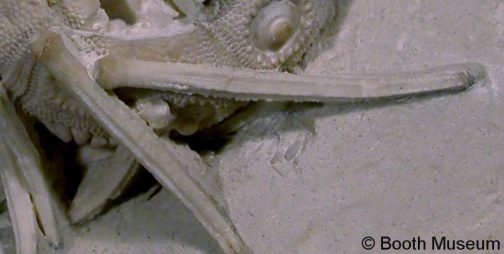
|
Phalacrocidaris serrifera (Forbes in Dixon, 1850) |
A moderately common cidaroid from the Turonian with slender but relatively short primary spines. The ribs are well defined and serrated. Tests are similar to small individuals of Phalacrocidaris merceyi but can be arbitrarily distinguished by the number of rudimentary primary tubercles at the apical end of each interambulacral column; P. serrifera has one, P. merceyi has more than one (compare).

1). Primary spines beside the test of the holotype (x4.5, Turonian, Malling, near Lewes, Willett collection, Booth Museum, BMB 007896, by kind permission of John Cooper).
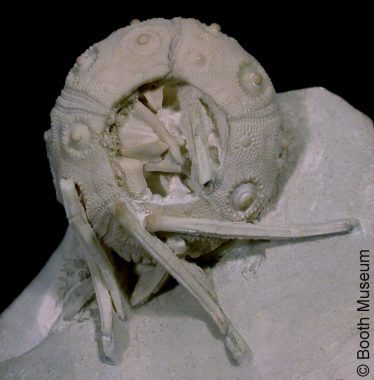 A A |
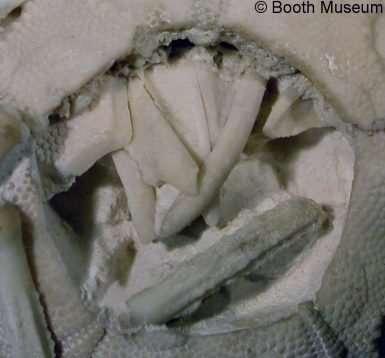 B B |
2). (A) Adapical view of the holotype (x2). Notice the sharp junction between white and grey chalk at the bottom left; this could represent a hardground (white), in which case the echinoid may have been preserved by falling into a lithified burrow network which was then infilled (grey), in a manner comparable to fissure-fill preservation. (B) The apical opening, through which the Aristotle's lantern is protruding (x5).
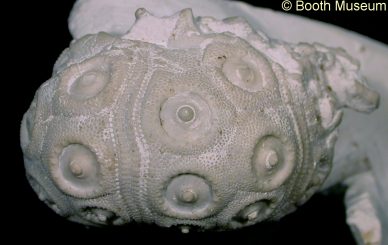 A A |
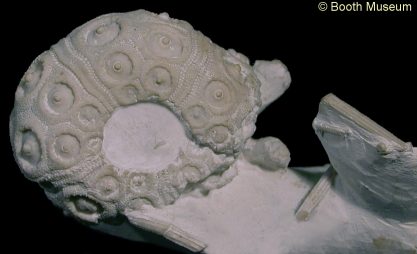 B B |
3). (A) Lateral (side) view of a complete test (x2.5). (B) Adoral view of the same specimen (x2) (Willett collection, Booth Museum, BMB 011134, by kind permission of John Cooper).
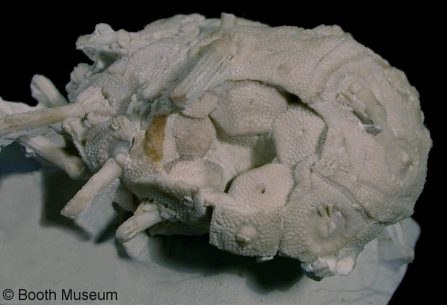 A A |
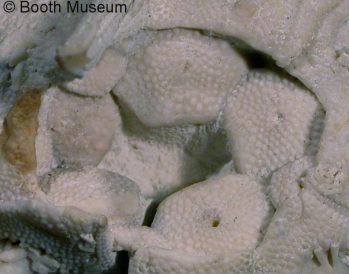 B B |
4). (A) Adapical view of a largely intact but rather squashed individual (x2). (B) The Apical disc (x3.5) (White Chalk, Sussex, Willett Collection, Booth Museum, BMB 011136, by kind permission of John Cooper).
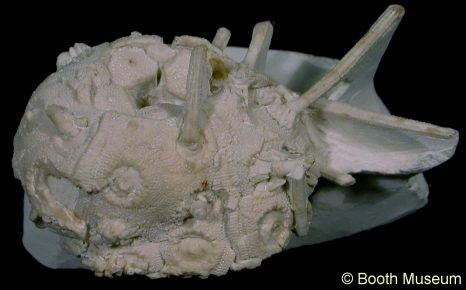 A A |
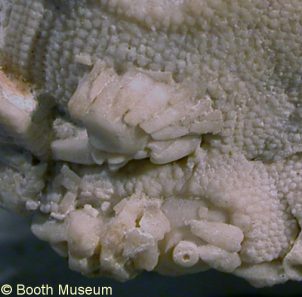 B B |
5). Views of the above specimen. (A) Lateral view (x2). (B) Detail of exceptionally well articulated scrobicular spines (x6)
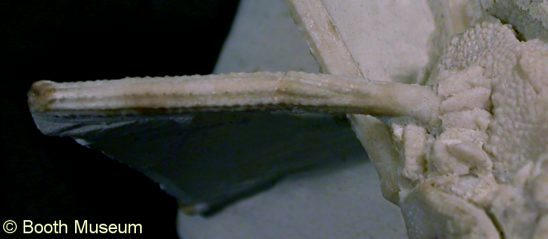 A A |
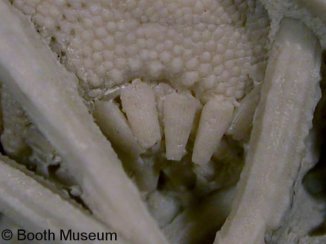 B B |
6). (A) Detail of the above specimen, showing a perfectly articulated primary spine and the accompanying compliment of scrobicular spines (x5). (B) Detail of the holotype with a well preserved ring of scrobicular spines (x8).
|
|
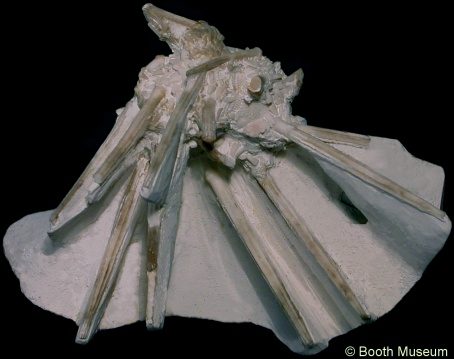 B
B |
7). (A) Lateral view of the holotype (x2.5). (B) A remarkably preserved individual with a largely complete compliment of spines. This could be either Phalacrocidaris merceyi or Phalacrocidaris serrifera as the diagnostic characteristics of the test are not exposed (x3.5, Potter collection, Booth Museum, BMB 011379, by kind permission of John Cooper).